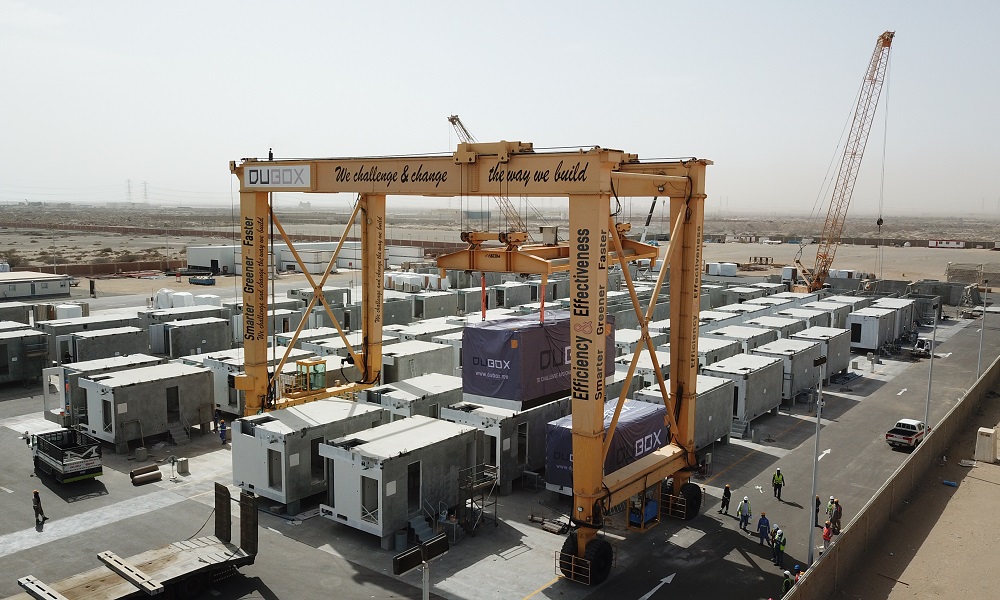A paradigm shift is taking place in the construction world, leading to an increase in preference to producing various units off-site, including high-end condos, hotels, and even airport terminals. A case in point, The Red Sea Development Company (TRSDC) adopted this approach from the onset with their residential units for the Coastal Village—a sprawling complex intended to house the future workers operating the destination, built off-site by their partner Saudi Amana Contracting Co and their subsidiary DuBox.
The residential apartments are part of a larger design scheme and a place to call home for 14,000 TRSDC employees and their families. Recently, Amana shared a video capturing the first batch of their residential buildings being mobilized to the project’s site from their factory in Rabigh, and subsequently being installed at the location.
Amana’s factory was initially established by collaborating with local suppliers and sub-contractors to build residential apartments off-site as part of the TRSDC contract and supply prefabricated units for future projects in the Kingdom.
“Saudi Amana is committed to developing local talents at all levels and providing employment opportunities. In fact, more than 26% of the factory’s roles are already held by Saudi employees. Furthermore, this manufacturing method will stimulate an eco-system of supporting services creating new business opportunities for the local community,” said Hattan Nazer, General Manager at Amana.
The off-site manufacturing method that The Red Sea Project is utilizing, refers to the construction methodology where a substantial portion of the building or installation is built and assembled in a factory located away from the building site. The assembled components may range from individual elements to fully completed and finished rooms or sections of the building or installation.
For the Coastal Village Management Residential Apartments, it is the latter case. This approach has multiple beneficial characteristics from a sustainability perspective including considerable reduction of people and material waste on site, which will reduce environmental impact of the project overall.
Moreover, TRSDC is actively reaching out to the market to identify potential partners who have off-site manufacturing expertise. By engaging such partners, the company aims to adopt the latest technologies and solutions that will deliver The Red Sea Project in the most sustainable yet cost-effective manner.
Currently, TRSDC has several live projects where off-site manufacturing is being implemented. The market was initially slow to react to implementation requests for off-site manufacturing until recently whereby local companies have engaged with foreign companies with a view to tapping into such methods and bringing the technology to KSA.
The challenge will be to incorporate these methods of construction in more complex projects – some of these projects lend themselves to off-site manufacturing whereas others will be more challenging due to size and the unique designs that are being developed. The approach and benefits are certainly in line with TRSDC sustainable ethos and they look forward to incorporating a high degree of off-site manufacturing across the development.
Most of today’s companies who are active in the off-site manufacturing market began their involvement with just a small side project and gradually increased their commitment. Companies should strongly consider off-site techniques as another tool to add to the toolbox, rather than as a need for a complete overhaul of their offering.

